
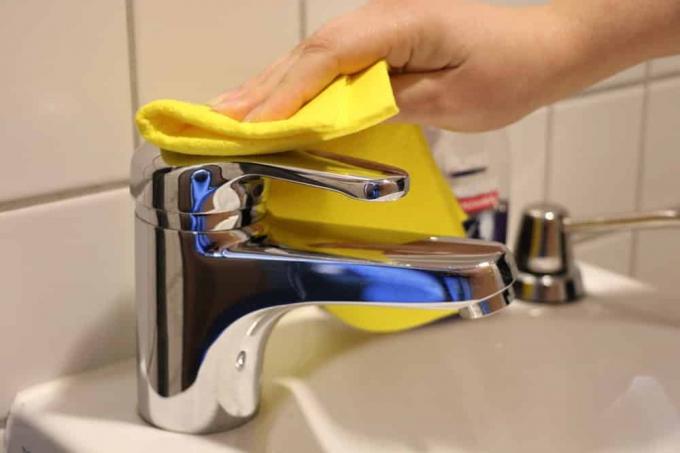
Table of contents
- Single-lever mixer and possible problems when using it
- Squeaking with every turn of the faucet - the solution to the problem
- Check the age of the faucet
- The use of oil in the single-lever mixer
- Descale single-lever mixer
- Gasket is defective
- The faucet is difficult - this is how you solve the problem
- The single-lever mixer is difficult - the first measures
The single-lever mixer tap is very practical and can be used in many ways. You can get fittings for the bathtub, the shower, but also for the washbasin and the kitchen sink. The fittings are durable and can remain in use for many years. Sometimes it happens that they are stiff or squeak. You can remedy the situation with various measures.
Single-lever mixer and possible problems when using it
Single-lever mixers impress with their simple functionality, but also with their longevity. In principle, it is not a problem to use the mixer tap for several years or even decades without causing problems. Nevertheless, it can happen that the single-lever mixer causes problems after a long period of use. The faucet lever is difficult to turn, sometimes it can hardly be moved or it squeaks with every turning movement. Buying a new faucet is not necessary with these problems. Before you decide to exchange, you can take various measures to remedy the situation. It is recommended that you act as soon as you notice the problem. Otherwise, things will get worse, and at a certain point repairs will no longer be possible and buying a new one will be inevitable.
Squeaking with every turn of the faucet - the solution to the problem
When operating the single-lever mixer, you may hear a slight squeak. In the beginning this is hardly audible. However, the more frequently you need the water from the tap, the more persistently you realize the unpleasant squeaking sound. He won't go away on his own. If this isn't a reason for you to invest in a new faucet, you should consider putting things right. It may be that the unpleasant squeaking sound is accompanied by a sluggishness and in this way two problems are mixed up. However, it often happens that the lever is very easy to operate, but that you still feel disturbed by the squeaking sound.
Check the age of the faucet
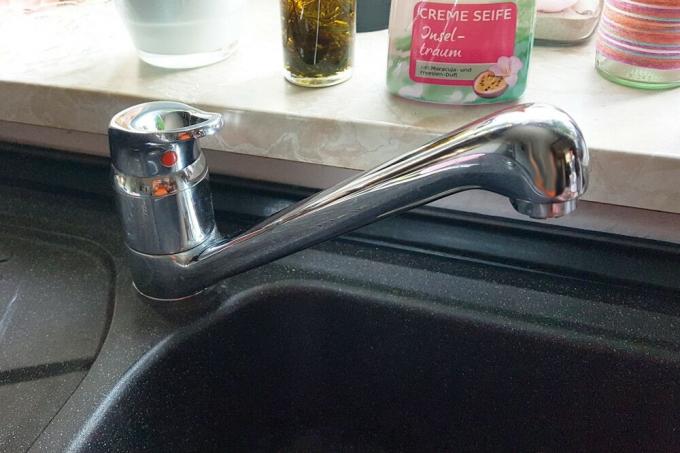
As a first step, you should consider when you bought the single-lever mixer tap. If the squeaking sound occurs during the warranty period, it is a defect and you are entitled to a replacement. You have a two-year guarantee for all taps that you buy or order in Germany. You should not attempt any repairs within this period, as you would void the warranty. Dismantle the faucet and take it to the retailer along with the receipt. He will arrange for an exchange or repair. If you have ordered the single-lever mixer, contact the retailer by phone or email.
cost of this solution
If the defect is a warranty case recognized by the manufacturer, you will not incur any costs. You only have to calculate the journey to the dealer. If you send the faucet in for repairs, the dealer is obliged to bear the costs. You should point this out to the dealer if he wants to charge you for the costs.
Good to know:
The dealer has the right to rectification. You must therefore expect that you will not be able to use the water basin in question for a period of up to two weeks if you do not have an old faucet as a replacement.
The use of oil in the single-lever mixer
In general, you should be careful when directing oil into the interior of the mixer tap. In the worst case, the oil gets into the running water and you no longer get clean tap water. However, if you find the squeaking uncomfortable and don't want to replace the single-lever mixer because you If you don't get the design or are not planning a new investment, you can very carefully try to use oil work. It is very important that you use a light penetrating oil. This has the ability to penetrate deep into the interior of a material and unfold its effect there. Make sure that you only use a very small amount and use high-quality oil and not a cheap product.
Proceed as follows:
- Turn off the water
- Open the lever and let the last drops of water flow out of the pipe
- Use a dropper with a very small amount of oil
- Put the oil on the rim of the mechanism that turns the lever
- Wait some time for the oil to soak into the inside of the faucet
- Remove the remains with a soft cloth
- Turn the water back on and do a functional test
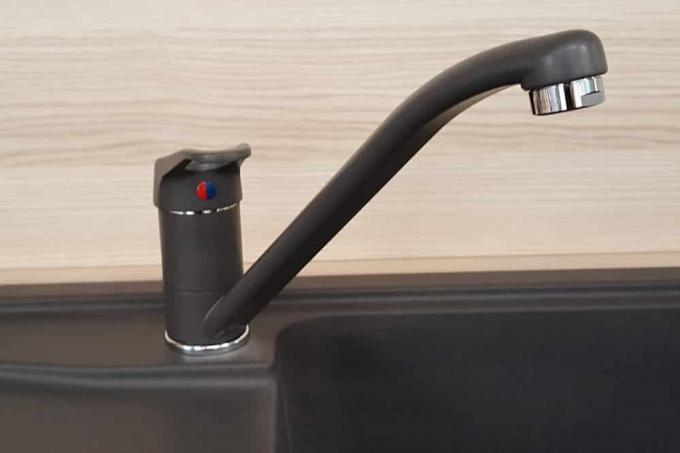
If the measure did not help, you can also dismantle the single-lever mixer and introduce the oil into the mechanism from below using the pipette. However, the effectiveness is lower because the oil is usually needed in the upper part of the faucet. On some models, the lever can be removed. This is very convenient because then you can put the oil directly into the mechanics.
cost of this solution
Penetrating oil is available as a practical spray. There are tweezers on the cartridge so you can easily dose the oil. The costs are between five and 15 EUR for a bottle. Some retailers offer larger quantities in a canister. You pay about 35 EUR for this. This solution only makes sense if you want to use the penetrating oil differently.
In hardware stores or specialist shops, you can get small bottles in which the tweezers are integrated into the screw cap, similar to medicine. These are particularly suitable for use on the faucet. You pay between three and seven euros for this product. Since the penetrating oil has a longer shelf life, you can also use it several times. This is recommended if you notice after a while that your tap is becoming stiff again.
Good to know:
If you only use a very small amount of oil, there is almost no chance of making a mistake. Proceed carefully and with finesse. If a little oil does get into the water system, run the faucet for a minute or two. In most cases, you can then use it again without restrictions.
Descale single-lever mixer
If you are unsuccessful in introducing oil into the mechanism, it may be that the mixer tap is calcified. This is the case if you have very hard water in your area. You can get information about this from the local waterworks. You have the option of removing the limescale. However, you will only be able to do this if the process has not progressed too far. Use pure vinegar, some citric acid or a high-quality descaler. Insert this into the mechanism with a dropper as instructed and allow an hour or two to act. Then try the function. In many cases, the unpleasant squeaking of the faucet has disappeared.
cost of this solution
Using household vinegar is very inexpensive. However, you should make sure that you use vinegar in the form of an essence. You can get it in all supermarkets and discount stores for one to two euros per bottle.
A descaler is also available in supermarkets, but also in drugstores. Depending on the manufacturer, you pay between two and five euros. Somewhat more effective are descalers that you can get in hardware stores. These products are sometimes not suitable for sensitive sanitary ware. However, you can use this descaler for the tap without hesitation. You pay about five euros for this product as well.
Good to know:
An aggressive descaler or citric acid can damage the high-quality mechanics. You should try home remedies first.
Gasket is defective
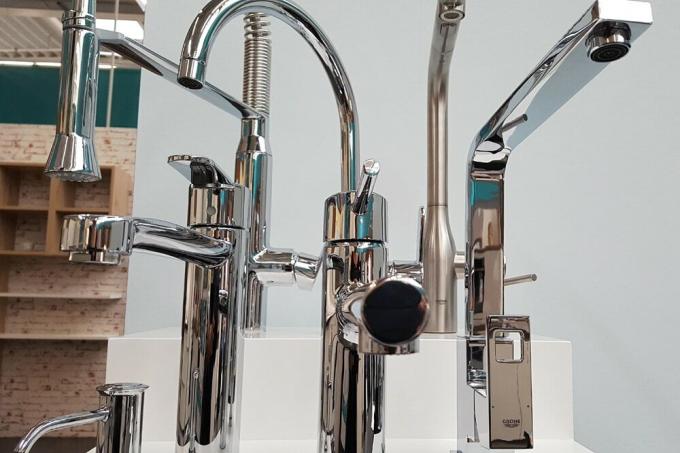
A broken or worn seal can also cause the faucet to make a squeaking noise. Obtain a new gasket from a dealer and replace it. This works like this:
- Turn off the water.
- Dismantle the single-lever mixer from the water basin
- Open the mixer tap so that you can access the seal
- Install a new gasket
- Reinstall the mixer tap on the water basin
- Turn on the water
Turn the lever a few times so that water flows to check that it is working properly. In many cases, the problem is solved by inserting a new seal.
cost of this solution
A gasket is a very inexpensive item, sometimes costing you just a few cents. Rarely are the costs more than two euros. The prerequisite, however, is that the seal you need is commercially available. This can sometimes be a problem with older faucets or models that are no longer in production or are from a foreign manufacturer. There are suppliers where you can have a seal made to measure. The cost is a little higher but still cheaper than buying a new faucet. This is especially true when it comes to a bathroom faucet that is no longer available in this design. If you value a uniform look, you would also have to replace the other fittings, which can be very expensive.
Good to know:
Sometimes it leads to success if you combine several of these measures with each other. Start with the oil, descale and in the last step change the gasket.
The faucet is difficult - this is how you solve the problem
The mixer tap lever is difficult to move or cannot be moved at all. You can also try to remedy this problem before buying a new faucet. If the lever of a mixer tap is stiff, this can have various causes. You will not always be able to find out the real cause, because the mechanism is self-contained and, with many faucets, cannot be dismantled. Nevertheless, you have various options to eliminate the problem.
The single-lever mixer is difficult - the first measures
First thing to do is try the actions you take when you notice your mixer faucet squeaking or being stiff to move. Proceed in this order:
- Treat the mixer tap with penetrating oil as described
- Descale the mixer tap
- Install a new gasket
It often happens that the squeaking of the lever is accompanied by a sluggishness. If all measures do not help, you must replace the cartridge. However, this is only possible if you can buy a new cartridge in the trade. With very old faucets, you won't get any more. In this case, only replacing the faucet will help.
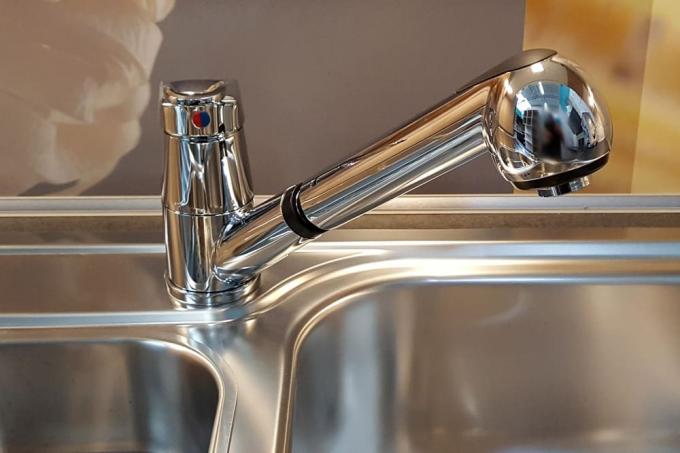
cartridge change
Changing the cartridge is not difficult, you can do it yourself. Proceed as follows:
- Turn off the water.
- Dismantle the single-lever mixer from the water basin
- Open the mixer tap
- Remove the cartridge
- Insert the new cartridge
- Reinstall the mixer tap on the water basin
- Turn on the water
Check whether the faucet is working smoothly again. In some cases, the effectiveness only becomes apparent after prolonged use.
cost of this solution
A new ceramic cartridge costs about ten euros if you choose a model from a third-party manufacturer. However, before buying, you need to make sure that the new model will fit your old faucet. Unfortunately, the third-party manufacturers do not offer suitable cartridges for all single-lever mixer taps. In this case you can contact the manufacturer. If a cartridge is available for your model, you sometimes pay up to 50 EUR. However, this pays off, because after using the cartridge you get a new tap. In addition, it is not necessary to exchange the other fittings to achieve a uniform look.
Good to know:
With the insertion of a new cartridge, you can easily turn the siphon again, and also get rid of the squeaking of the faucet.
 Home editorial office
Home editorial office
Learn more about water

Drain in the shower stinks: these 7 home remedies will help
If the drain in the shower stinks, it can be unpleasant not only during use. Bad smells from the pipes can spread throughout the bathroom. This guide shows how the problem can be solved with home remedies.

Water consumption when showering in liters per minute
Anyone who knows how much water is consumed when showering in liters can use this to reduce costs in a targeted manner. Especially with regard to rising energy prices and a more conscious use of resources, there is often an undreamt-of savings potential.

Install check valve vertically or horizontally?
A non-return valve prevents the flow of liquids or gases in the wrong direction due to its operating principle. This makes it an important component, for example, in garden pond pumps or on the heating system. But should it be installed vertically or horizontally? We clarify.

Domestic waterworks: how to increase the pressure
With a domestic waterworks it may be necessary, depending on the depth, to increase the pressure. But how can the setting be made and when is it necessary to make an adjustment? All important information can be found here.
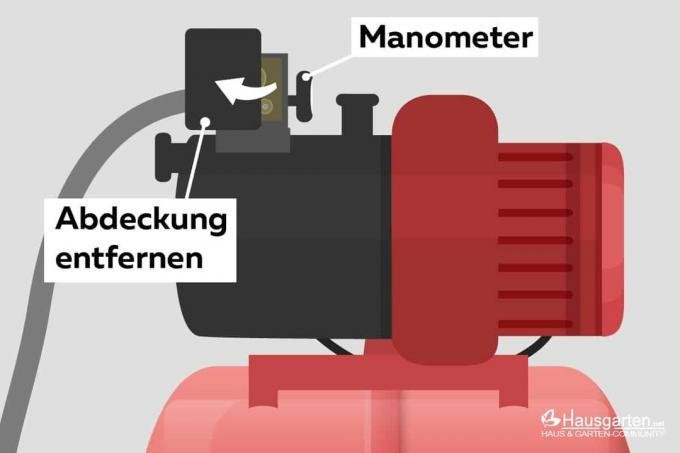
Domestic waterworks: set the pressure correctly
Adjusting the pressure correctly in a domestic waterworks is very easy with the appropriate knowledge. Our guide shows how the measure should be carried out and what to look out for.

Domestic waterworks does not draw water: what to do?
If the domestic waterworks does not draw water, the question arises: what to do? The answer depends on the type of pump and the problem at hand. Our guide shows possible causes and solutions.

